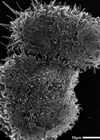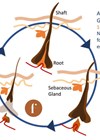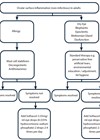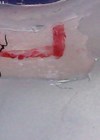Ophthalmology
Ophthalmology assessment using Revised Bloom’s Taxonomy
Bloom’s Taxonomy is a hierarchical list of attributes and skills that facilitates teachers to effectively teach, whilst concurrently enabling learners to effectively learn. It was first developed in 1956 by Benjamin Bloom, an educational psychologist along with a team of...
Is patient masking leading to an increase in post-op infection after eyelid surgery?
Due to the COVID-19 pandemic, the use of facemasks or face coverings in the clinical setting has become necessary. It is important to recognise that facemasks can be a source of infection after eye surgery and consider ways to minimise...
OBITUARY: James Finbarr (Barry) Cullen
On the sad passing of Eye News’ first editor and long-term contributor JF (Barry) Cullen, his friend Hector Chawla takes a look at the life and career of this effervescent character and giant of the ophthalmology world. Barry Cullen was...
Ophthalmic learning through the lens of cognitivism and constructivism
Learning in ophthalmology is multi-faceted, from understanding the fundamentals of eye anatomy and physiology to higher order skills such as performing cataract and vitreoretinal surgery. Having a strong foundation in the basics is a necessity for higher order knowledge synthesis,...
New solutions in the prevention and treatment of Acanthamoeba keratitis
The global increase in Acanthamoeba keratitis infections has emphasised the inefficiencies of current treatment and preventative methods, here researchers from the West of Scotland detail a promising new series of compounds that may stem the tide. News headlines detailing horror...
The future of multi-professional working in eye care
How the integration of service improvement technology, and health promotion will allow eye care professionals to overcome current and future challenges. The future of eye care in the UK is at a precipice. Hospital attendances are increasing year on year,...
Sensitive cilia – eyelashes in health and disease
In health our eyelashes protect the eyes, but in disease they can disfigure, impair quality of life and threaten vision. In this review the authors discuss aspects of lashes that are relevant to all professionals working near the eyes and...
The science of glaucoma management: highlights of the 2020 Moorfields International Glaucoma Symposium
Held earlier this year, the 12th annual Moorfields International Glaucoma Symposium provided a forum for advanced clinical and scientific exchange in glaucoma management. The authors describe the key presentation themes and debates, highlighting specific topics of interest to glaucoma specialists....
Usher syndrome: an overview
Usher syndrome is the most common hereditary condition that affects both vision and hearing. It is an autosomal recessive condition characterised by retinitis pigmentosa (RP) and bilateral sensorineural hearing loss [1,2]. Usher syndrome is the cause of approximately 10% of...
My COVID-19 songs
A portrait of Anna by Tamara Jovandic-Everson as part of #portraitsforNHSheroes. I am a consultant eye surgeon and these are my COVID songs. First of all, I have not even had time to digest the past six months, partly because...
Uncertainties and opportunities in ophthalmology training after the COVID-19 pandemic
Alexander Jones asks what impact the current pandemic will have on ophthalmology trainees. In my work as a Clinical Teaching Fellow, I have to admit that chaos is uncommon. Neither the anxious excitement of rushing to help an unwell patient...
Use of a smartphone repair microscope for microsurgical suturing simulation
Suturing ocular tissues under microscopic guidance is a skill that has declined in frequency, with the majority of cataract operations being sutureless. With the recent COVID-19 outbreak, training opportunities in theatre have declined further, given elective surgery cancellations. Subsequently, trainees...














